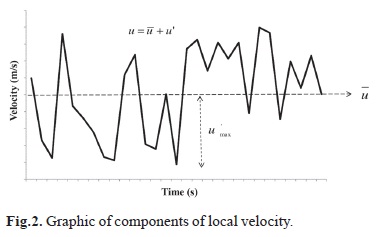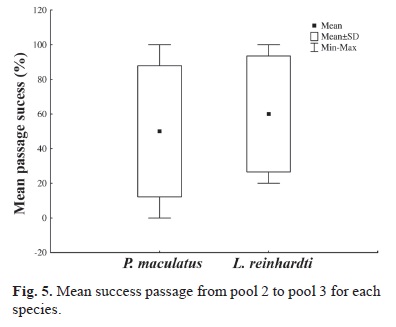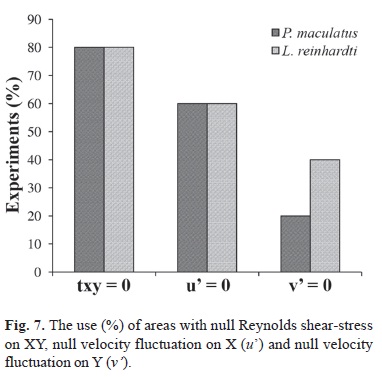The barriers created by dams can cause negative impacts to aquatic communities, and migratory fish species are directly affected. Fishways have been developed to allow the upstream passage of fishes through dams. In Brazil, after the implementation of environmental laws, these structures have been built based on European and American fishway designs. Studies have shown selectivity for different neotropical fishes in some Brazilian fishways, and the main challenge has been to promote upstream passage of a large number of diverse fish species. The patterns of flow circulation within the fish ladder may explain fish selectivity although few studies detail the fish response to hydraulic characteristics of fish ladder flow. This paper presents a laboratory study, where a vertical slot fishway was built in a hydraulic flume and the behavior of two neotropical fish species (Leporinus reinhardti and Pimelodus maculatus) were analyzed. The structure of flow was expressed in terms of mean velocity, Reynolds shear-stress and velocity fluctuation fields. The individuals of Leporinus reinhardti had higher passage success than Pimelodus maculatus in the laboratory flume. Both species preferred areas of low to zero Reynolds shear-stress values. In addition, different preferences were observed for these species concerning the horizontal components of velocity fluctuation.
Leporinus reinhardti; Neotropical fish; Pimelodus maculatus; Velocity; Vertical slot










